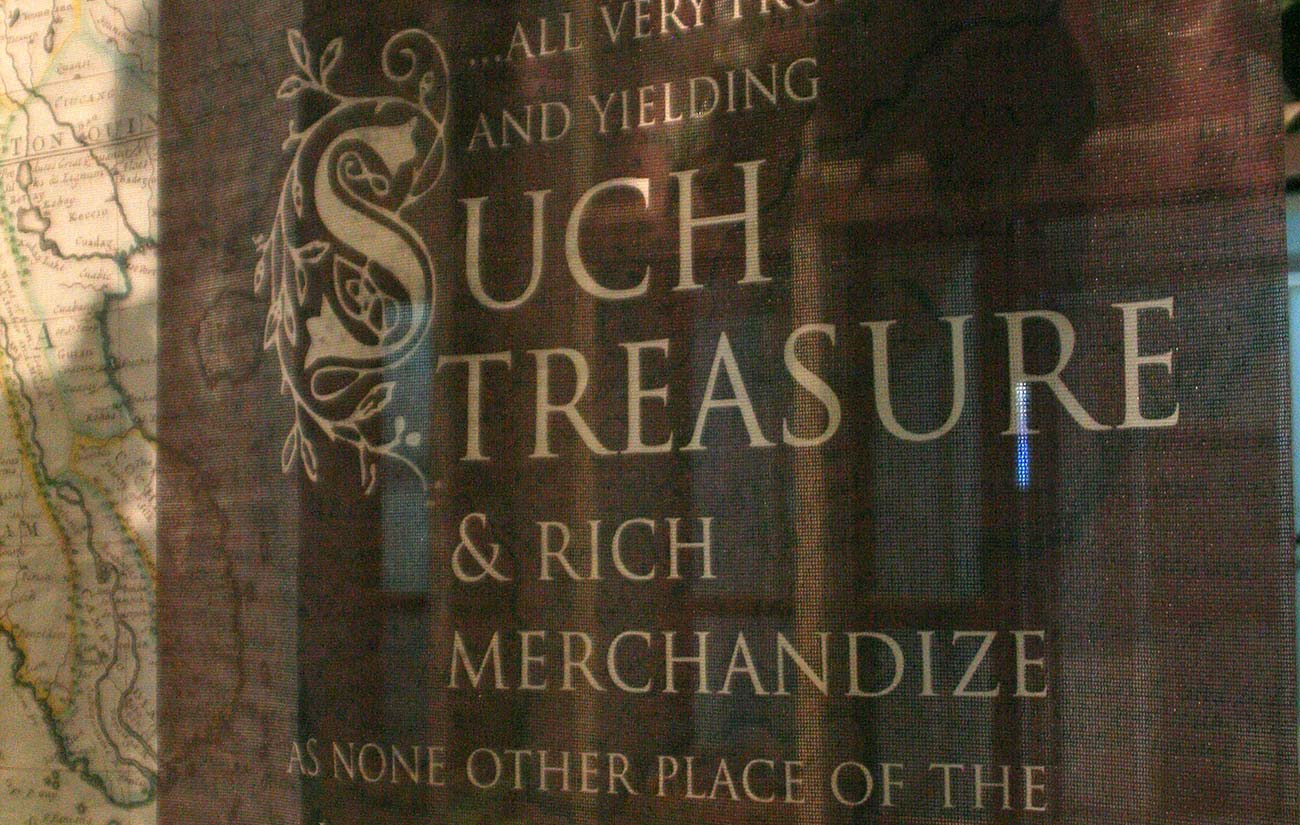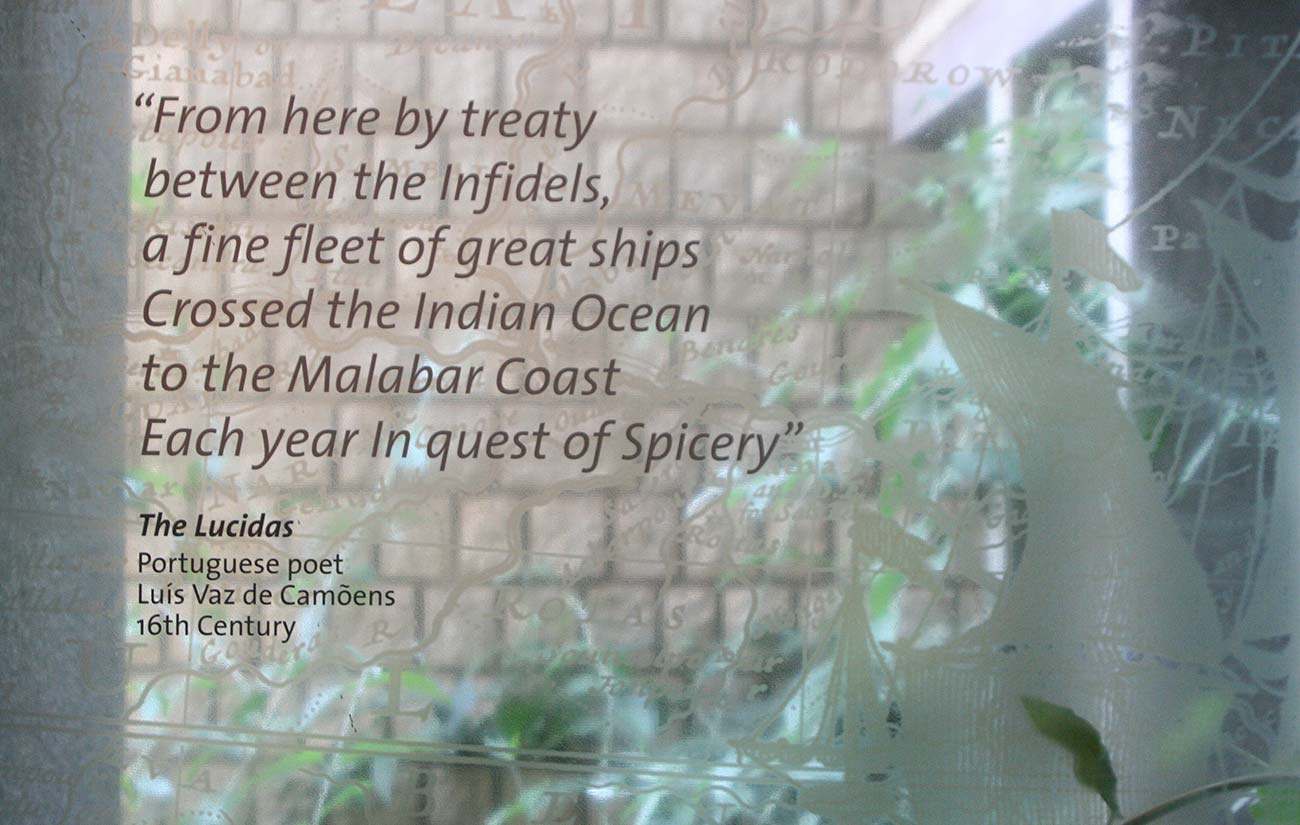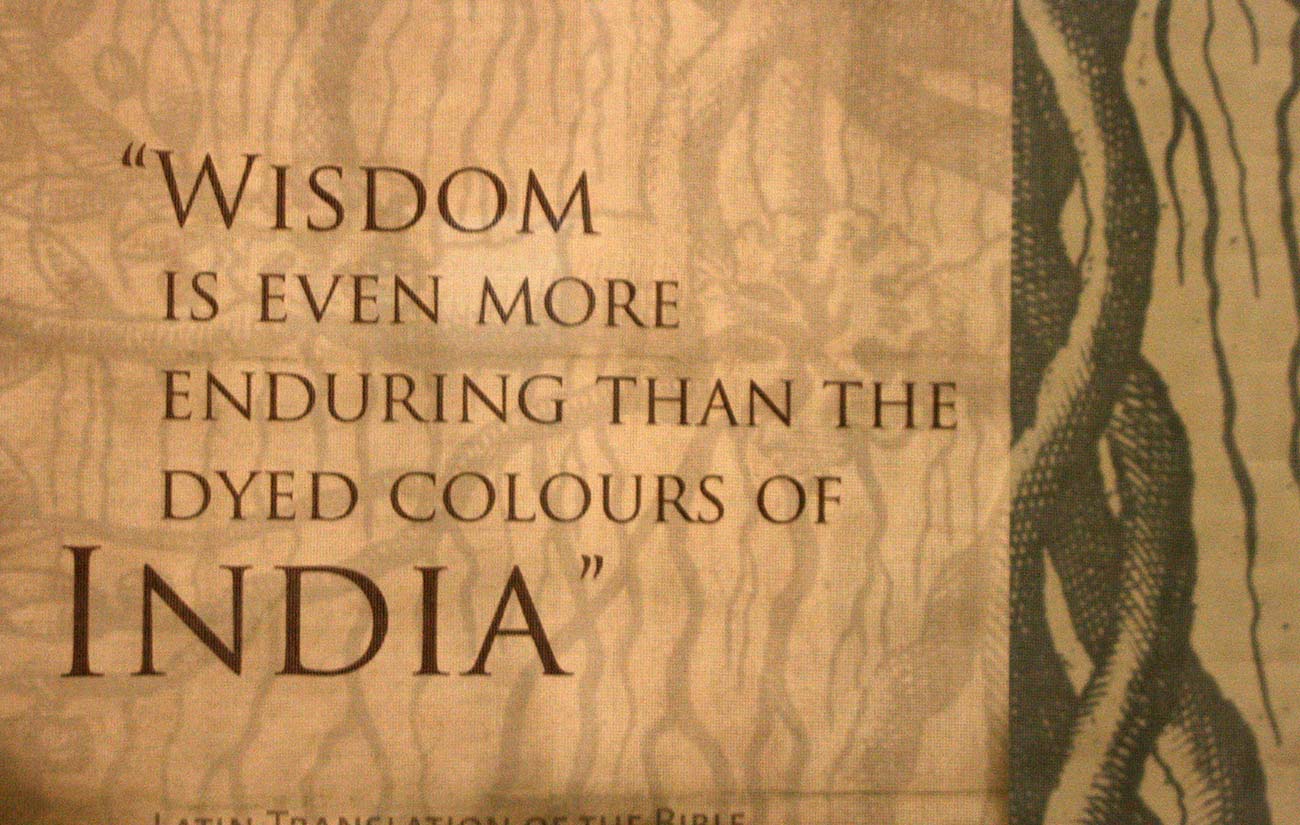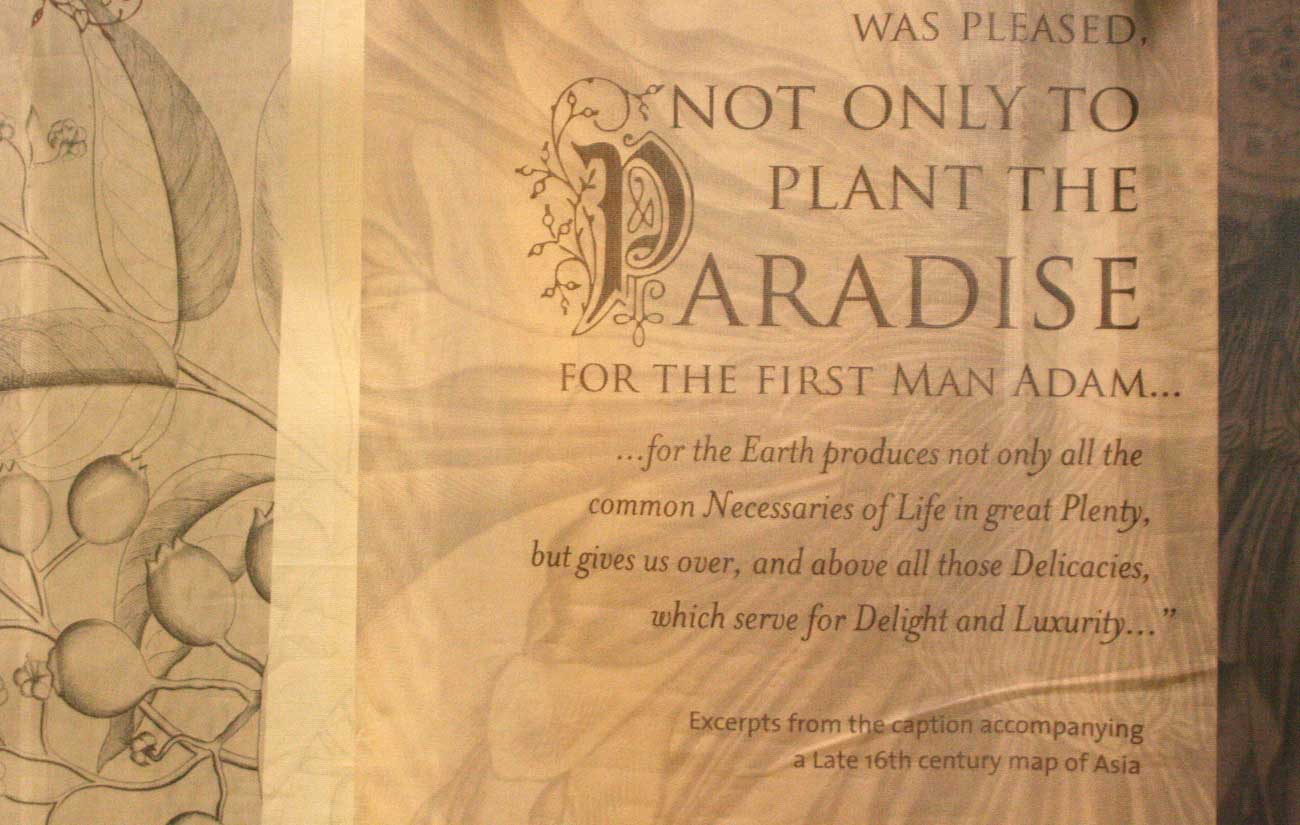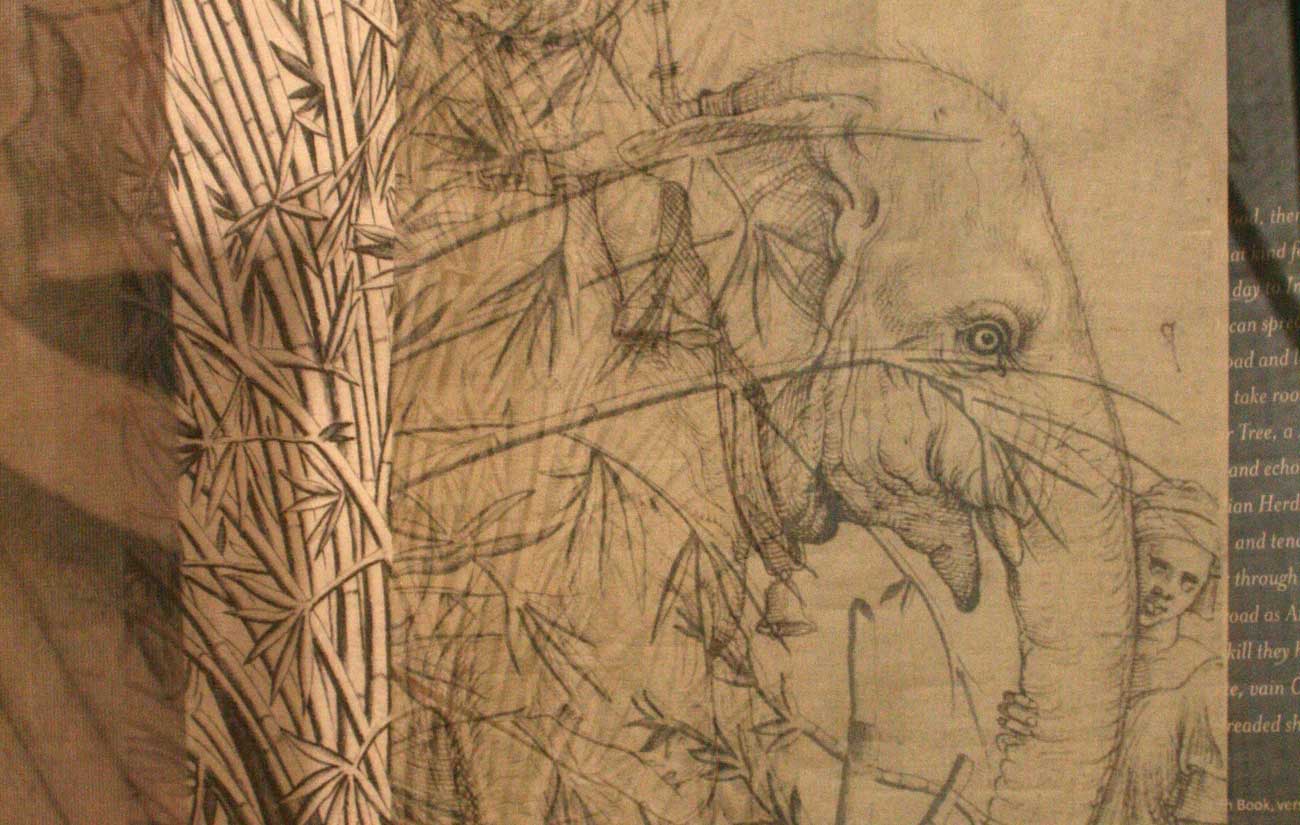Such Treasure and Rich Merchandize
A Garden of Knowledge
An exhibition on the botanical wealth of the Malabar
Books were important mediators of the transfer of knowledge from India to Europe in the 16th and 17th centuries.
The banyan tree is a symbol of knowledge in Indian mythology; an illustration of the banyan ficus from a 16th century book becomes a gateway to the imagined paradise, an India that is rich in Such Treasure and Rich Merchandize. Visual representations from historical sources such as the botanical illustration of the ficus tree and densely layered maps were instruments in the process of establishing colonial empire – expressions of political and religious power. Books of the period provide a unique window into the complex nature of early East-West interaction, which was based on commercial interest in the natural products of India as commodities of trade.


The exhibition, Such Treasure and Rich Merchandize, on books from the 16th to 17th centuries featuring Malabar botanical wealth was visualized across the campus of the National Centre for the Biological Sciences. We identified and crafted iconic imagery, creating experiential spaces that helped visitors make personal and embodied connections with content. Stone and glass installations inspired by seafaring explorations, maps and botanical illustrations breathed new life into the interiors of the academic institution.
Some of the installations breathed new life into the existing spaces and were intended to ‘speak’ evocatively to the residents of the academic institute.
Some of the installations breathed new life into the existing spaces and were intended to ‘speak’ evocatively to the residents of the academic institute.
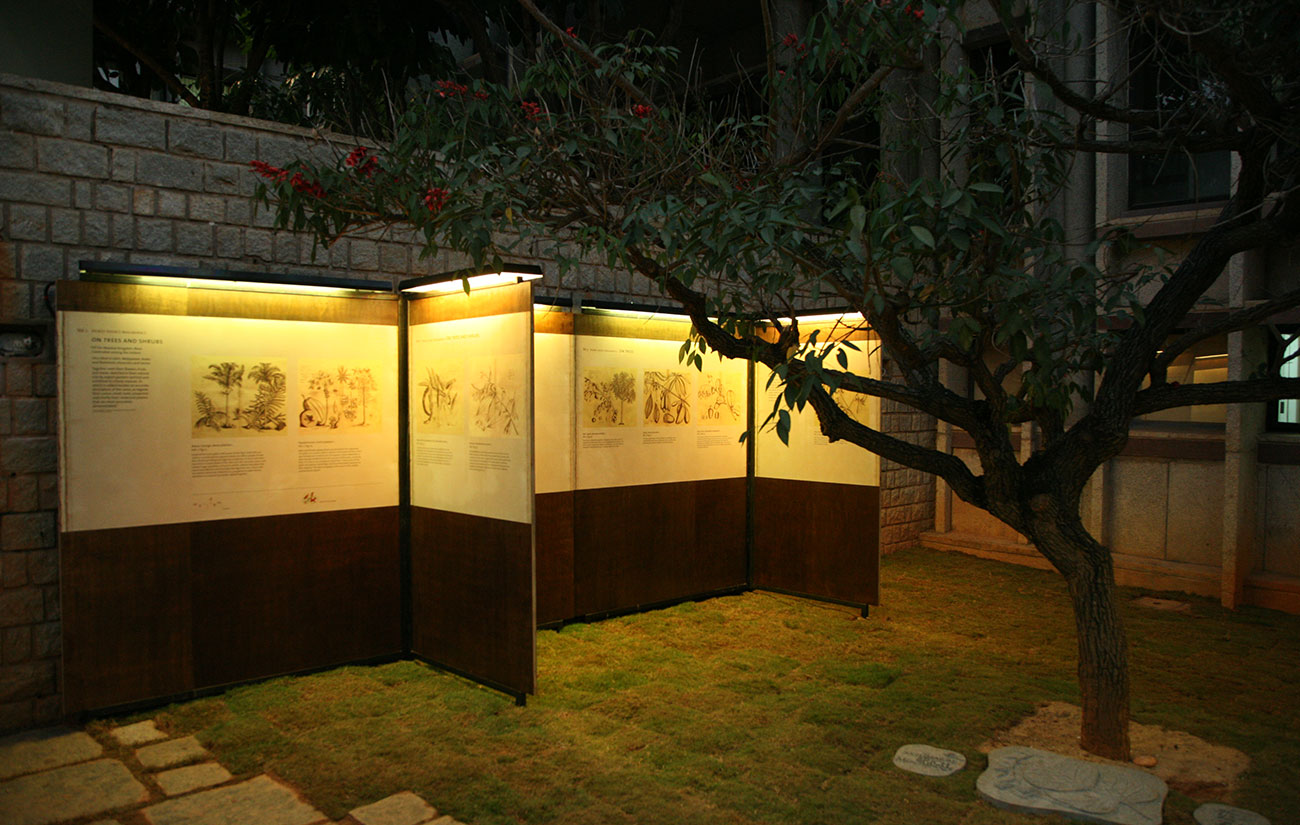
A real garden of plants from the books and an imagined one made of fabric panels created a paradisical ‘garden of knowledge’.
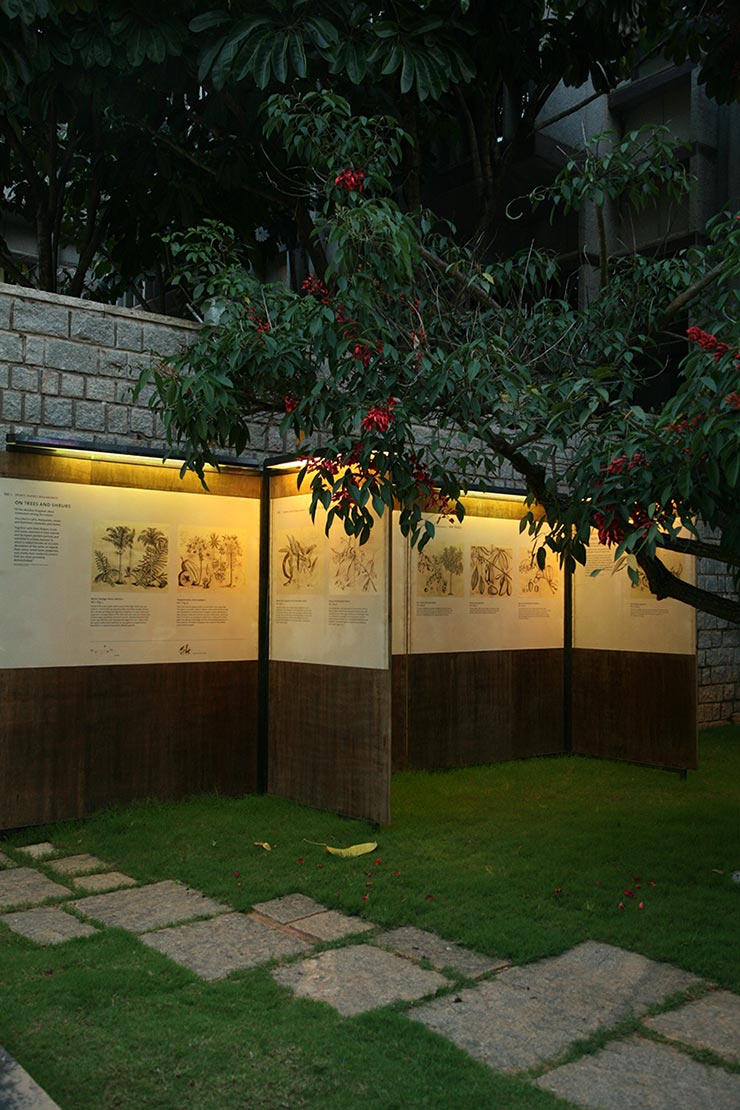
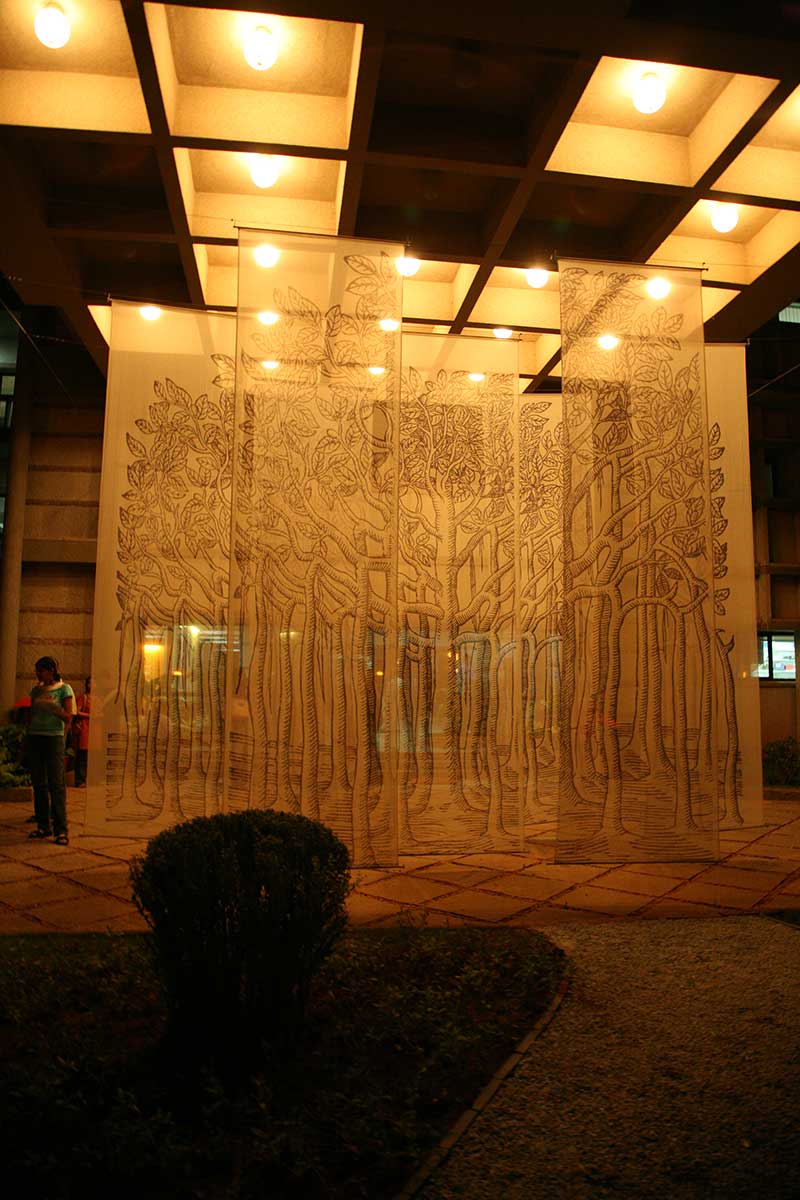

Scope
Mapping of narratives across the architecture | Design of permanent art installations | Catalogue and other print collateral | Exhibition design and production | A digital flipbook of the Hortus Malabaricus | Planning and design of the herbal garden
Team
Co Curated by Annamma Spudich and Sarita Sundar, Trapeze Design team



